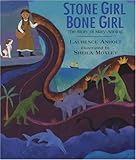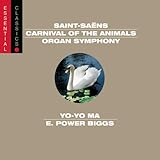Booklist






Calvert Cliffs State Park
Activity Guide
Theme: Fossils
Wednesday – introduce topic
Use the book On My Beach There Are Many Pebbles
Follow the story with "The Crayon Rock Cycle” activity. Tell the children that they are going to practice how rocks are made using crayons as their pretend rocks. They will each get a sample of the different types of crayon “rocks” to take home.
Thursday – explore topic
Begin by reading either The Fossil Girl: Mary Anning's Dinosaur Discovery
Give students a chance to get up and move around by listening to the “Fossils” (#12) piece of music from the Saint-Saëns: Carnival of the Animals
Ask students whether only hard things can become fossilized. The answer is no – even animal poop can become a fossil if the minerals replace it quickly enough! There is a piece of fossilized crocodile poop (called a coprolite) at the Calvert Marine Museum.
Other signs of animals can also fossilize – most notably, footprints – and that is what our activity will focus on today. Students will make plaster castings of “animal footprints” (in actuality their own handprints or footprints or finger marks or whatever kind of marking they want to make in the soft mud or wet sand provided).
Allow students to look through Fossil (DK Eyewitness Books)
by Paul Taylor as a resource for more information about fossils. Keep the book on hand for the field trip.
Friday – make field trip journals
While waiting for the field trip, have children decorate black construction paper with white chalk drawings of bones or other fossils. Have each child write his/her name on the back of the artwork. Fold and hole punch 8 ½ x 11 white paper, punch artwork to match (to be journal cover). Tie ribbons through holes. Have each child write the name of the field trip destination, the date, and his/her age on Page 1 of the journal. Have each child write a prediction of what he/she expects to see and do on the field trip on Page 2. Take the journals and a pencil for each child so that he/she can take notes on the field trip.
Materials List
Old wax crayons in assorted colors
Source of very hot water
Container to hold hot water
Aluminum foil
Scraping tools (cheese grater, popsicle sticks, plastic knives, etc.)
Aluminum pie plates
Mud or wet sand
Plaster of Paris
Water
Paper cups
Popsicle sticks
Paper clips
Cardboard (cut into strips)
Marker (to identify each child’s fossil)
Black construction paper
White chalk
3 hole punch
8 ½ x 11 inch white paper
Ribbon in various colors
Pencils









 Immersive Experience
Immersive Experience Immersive Experience
Immersive Experience
1 comment:
I had someone comment to me that she's going to have her children use wire mesh to make sieves to help in their fossil collecting. See http://en.wikipedia.org/wiki/Fossil_collecting
I thought this was a great idea!
Post a Comment